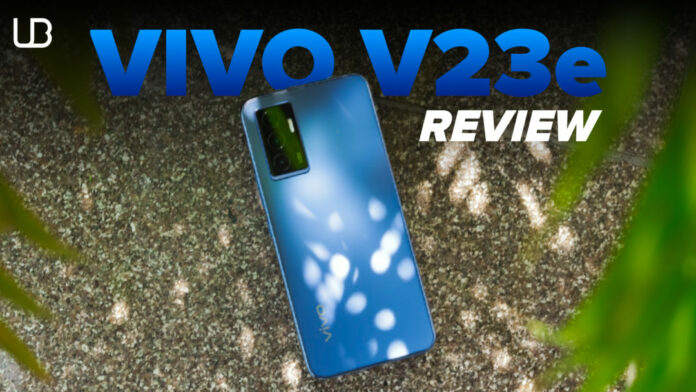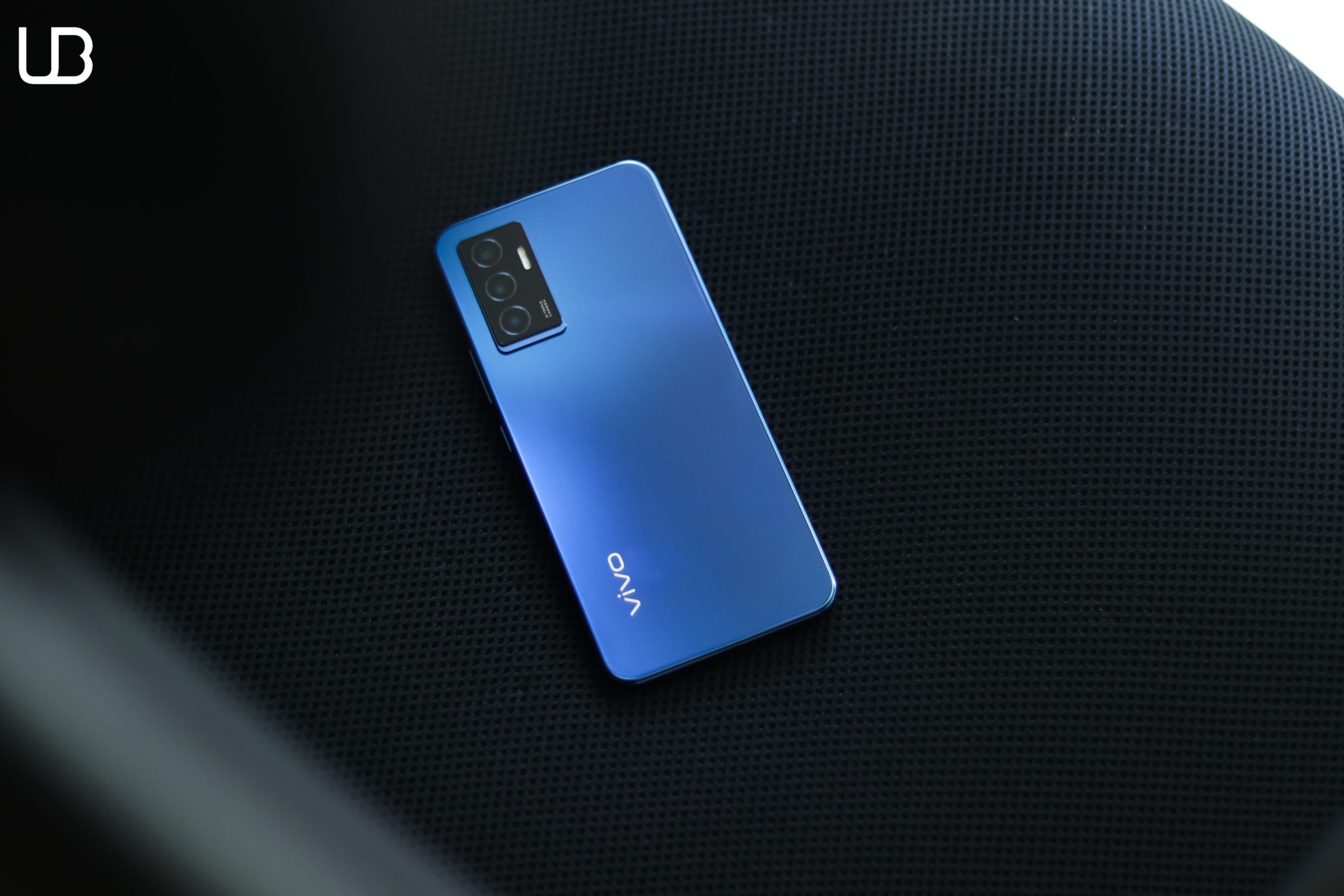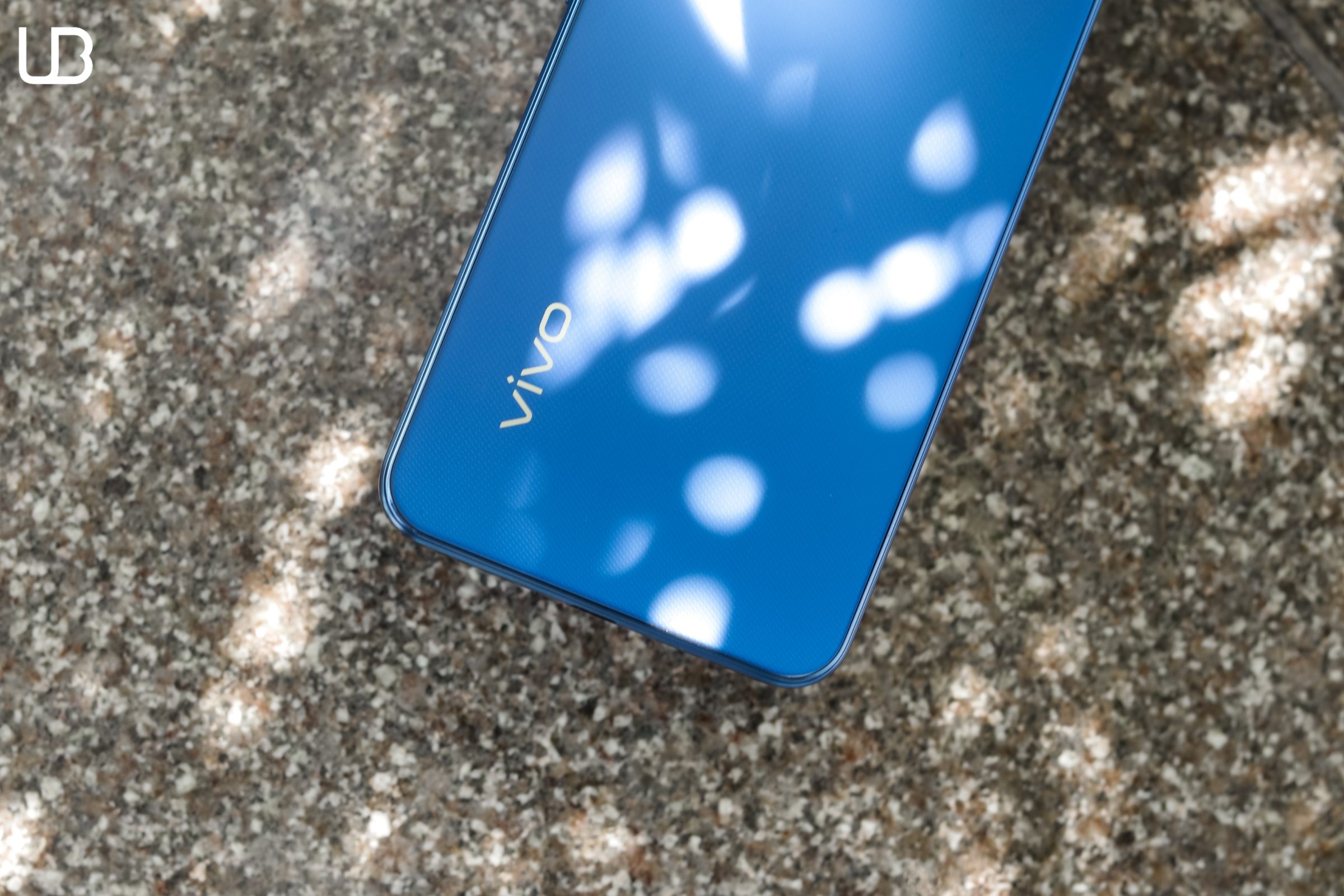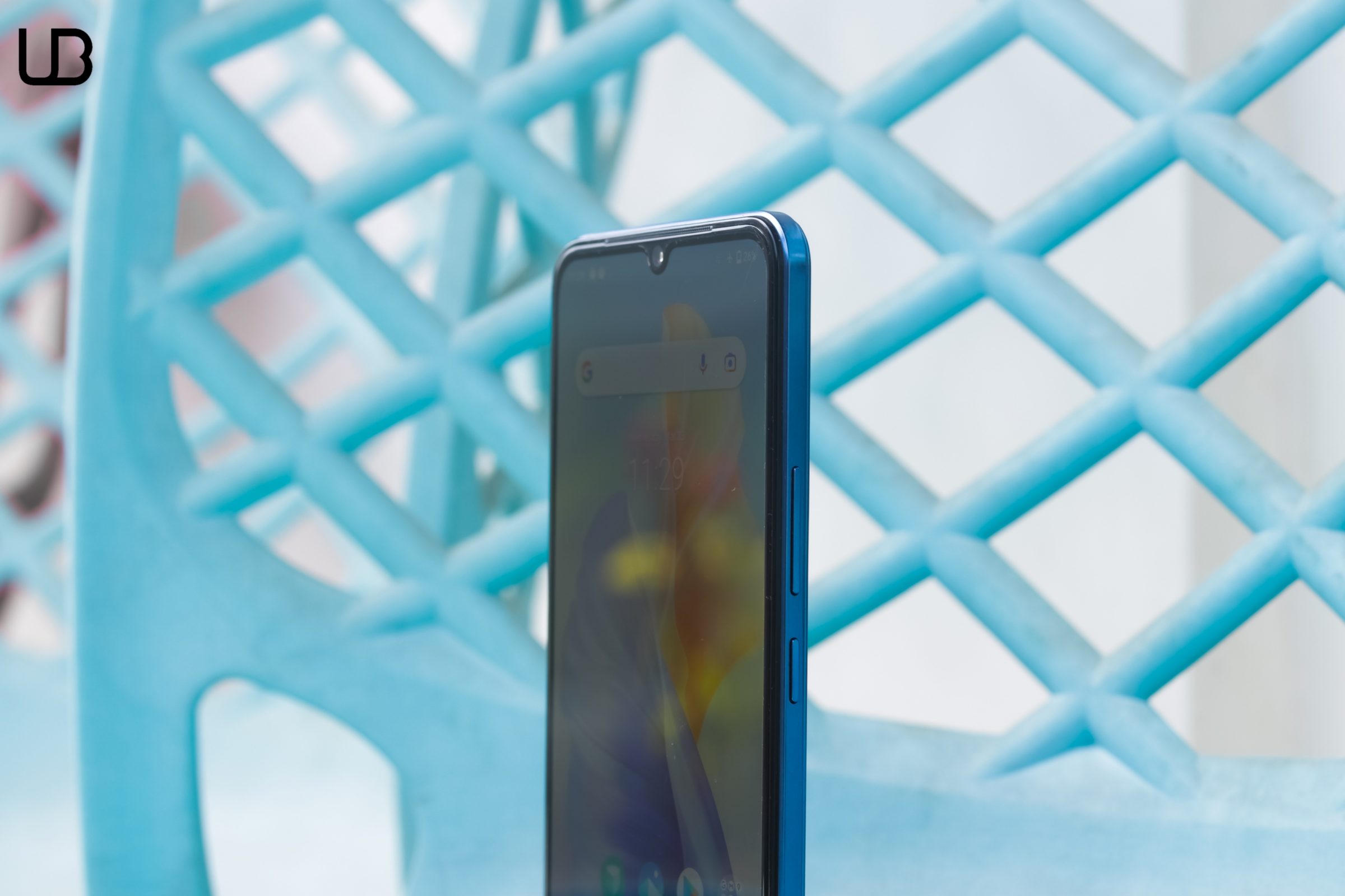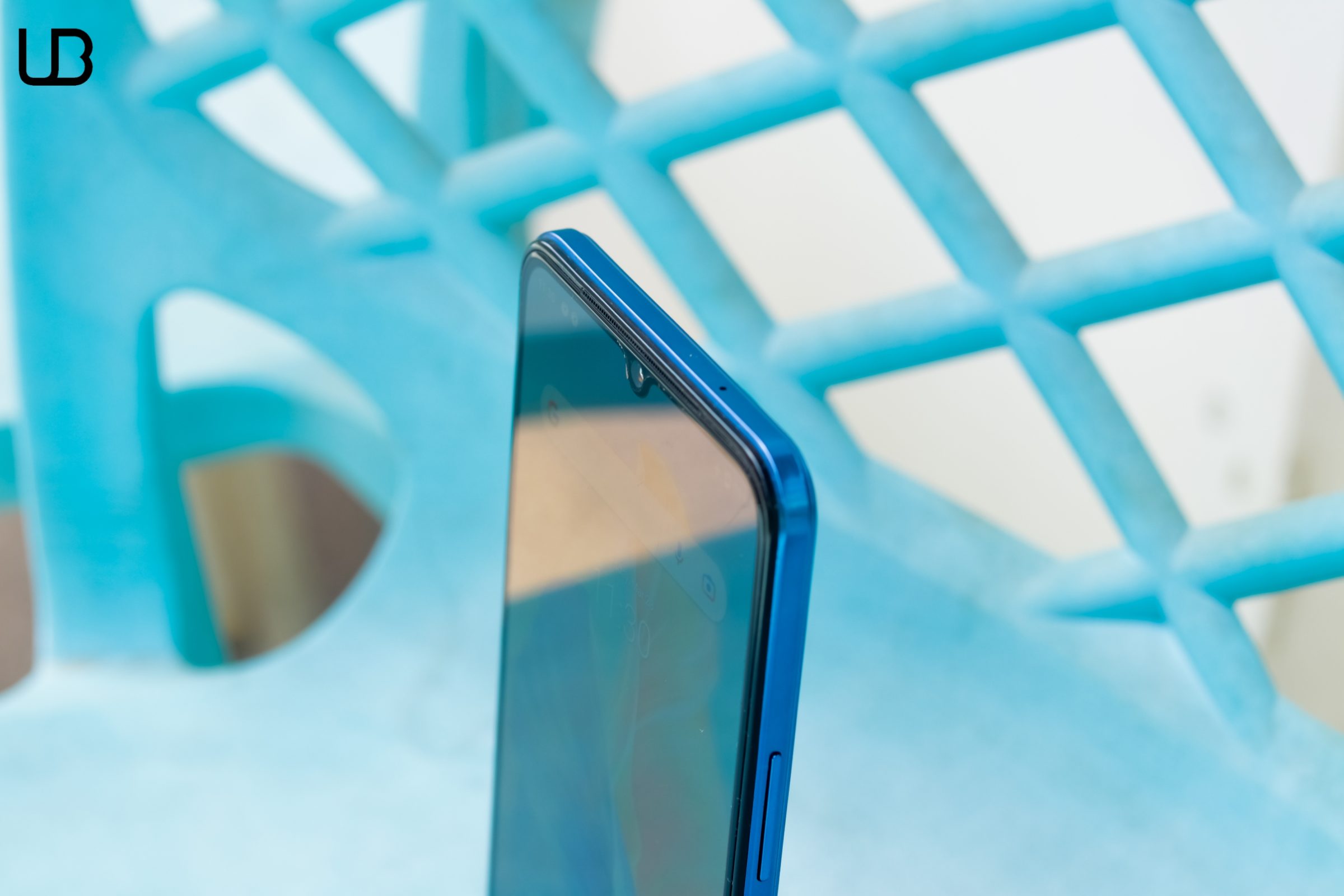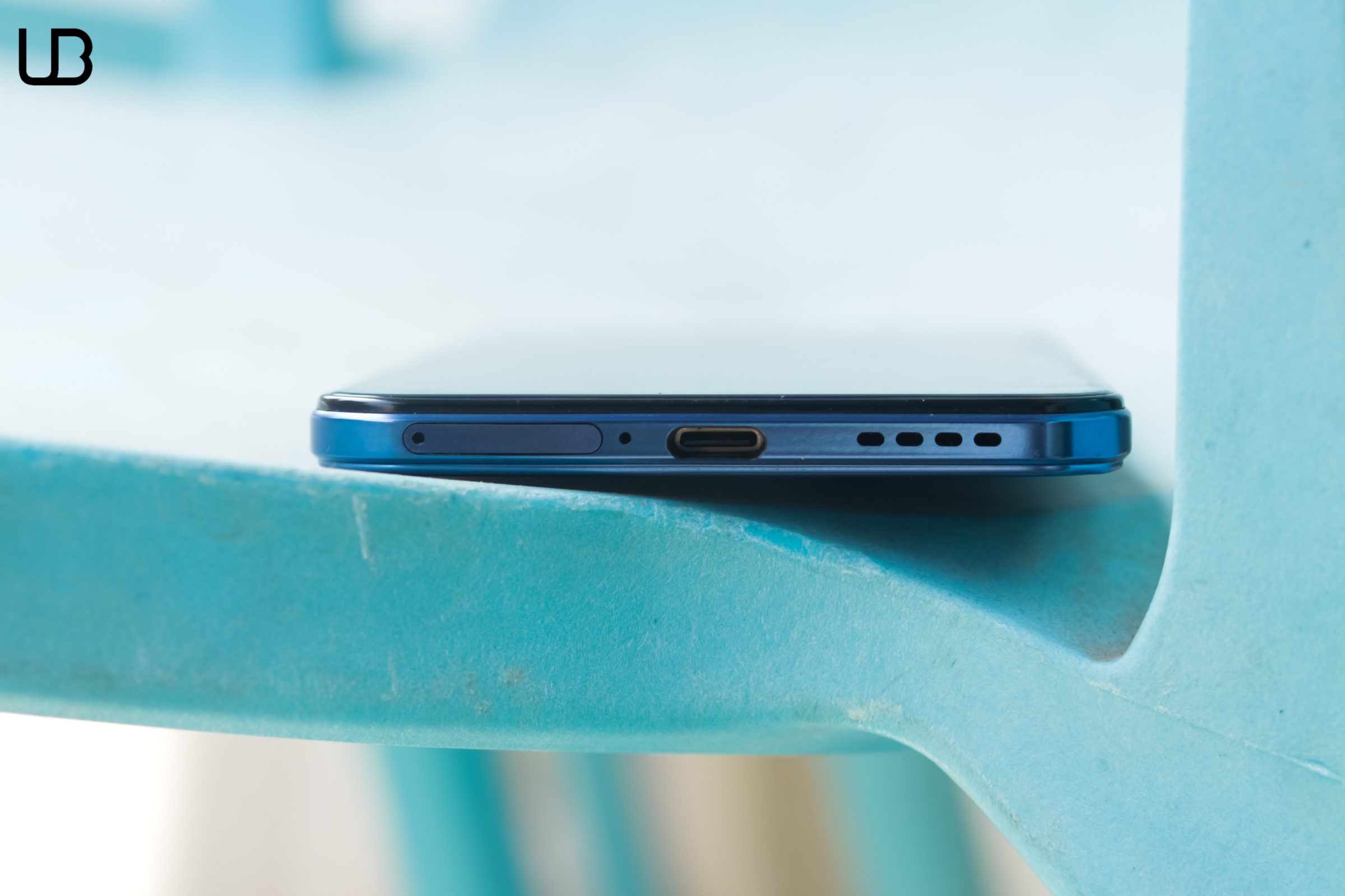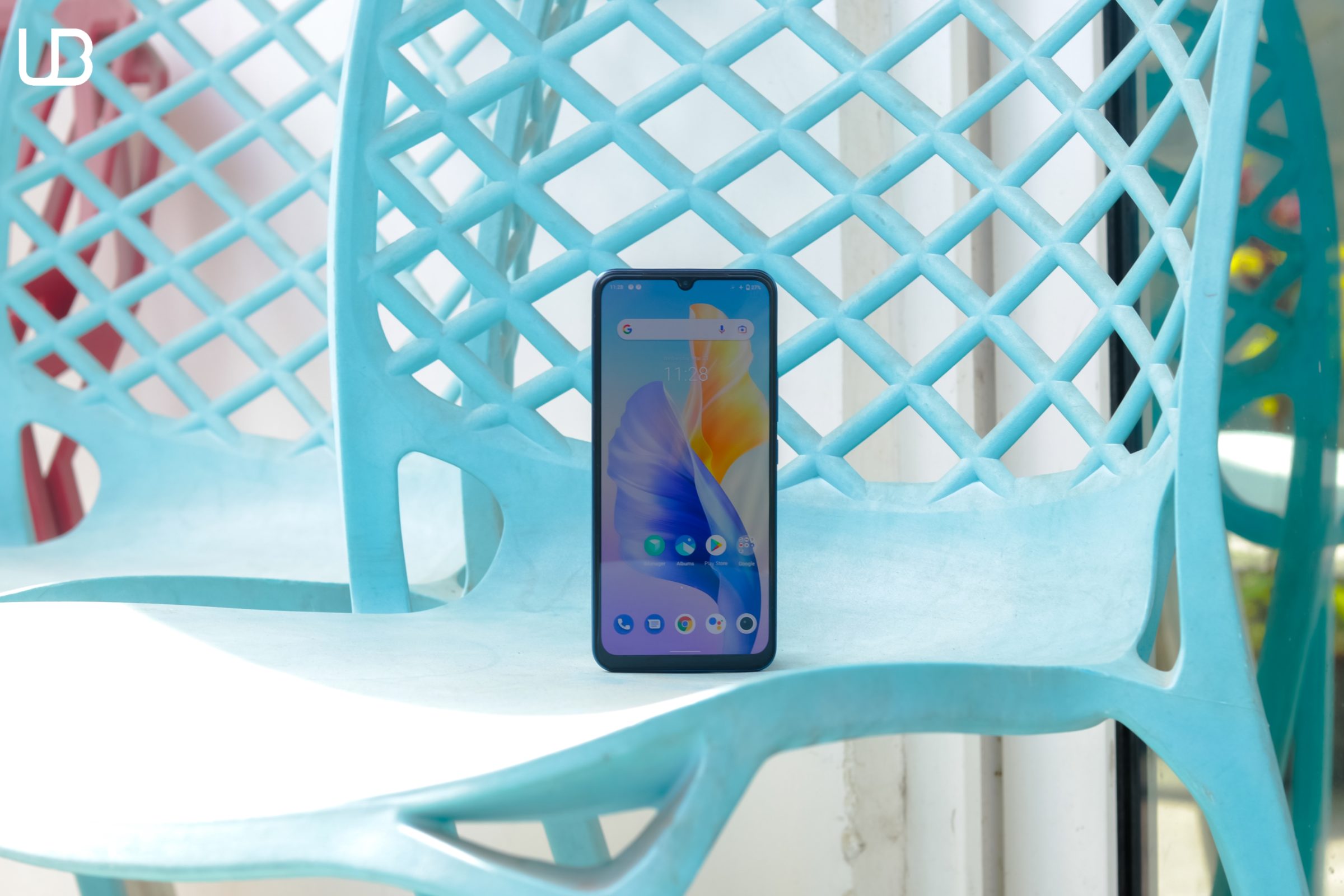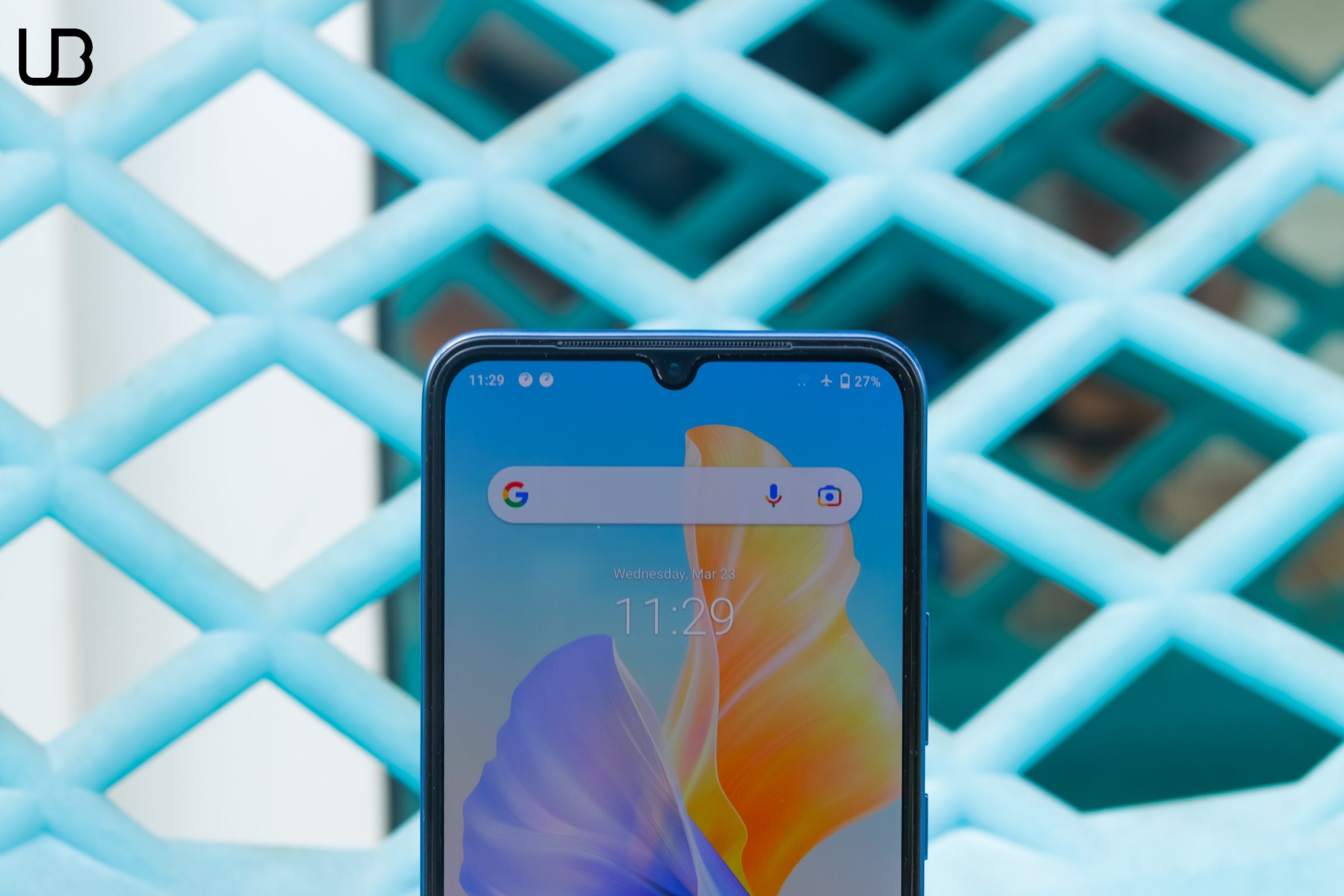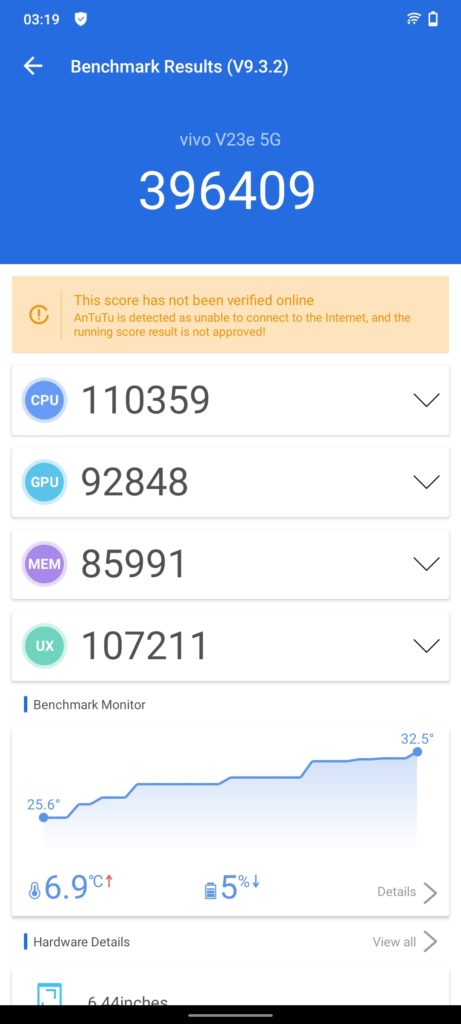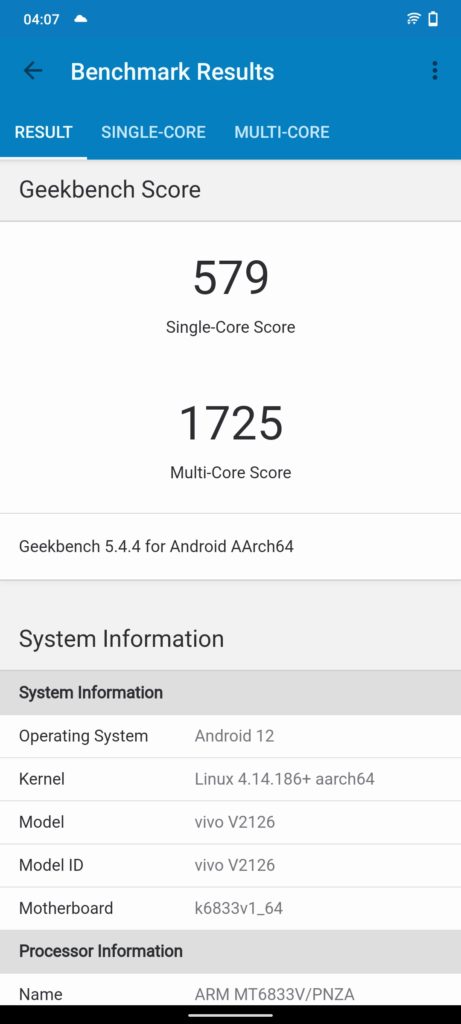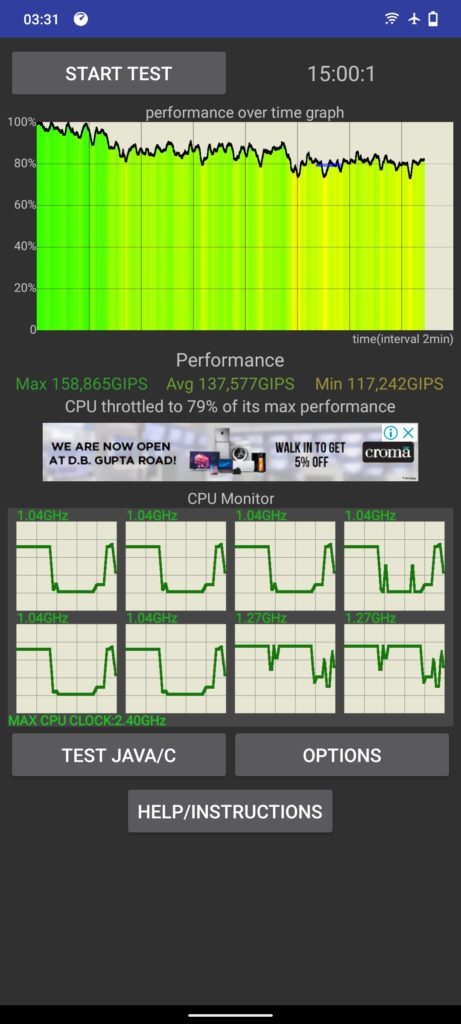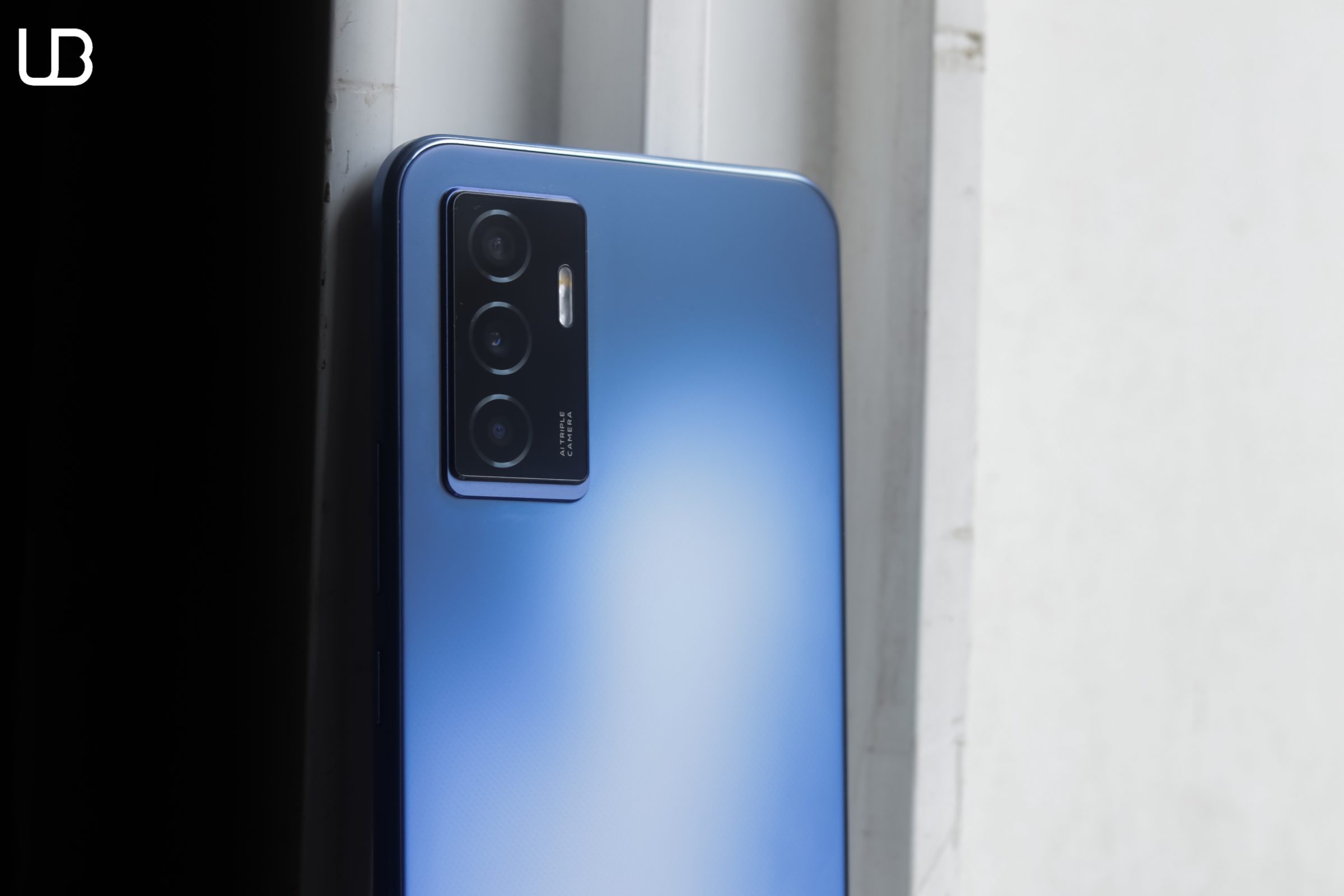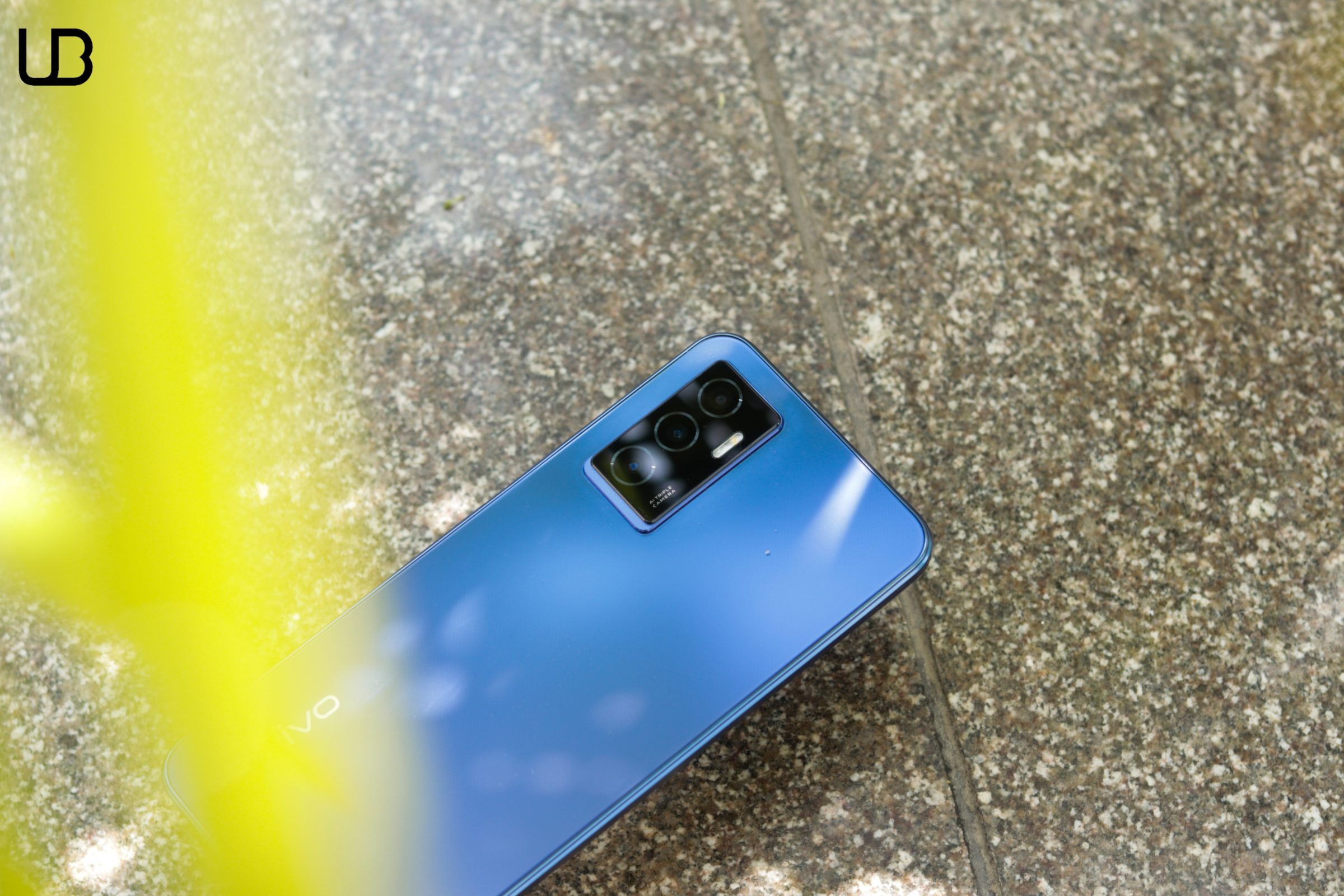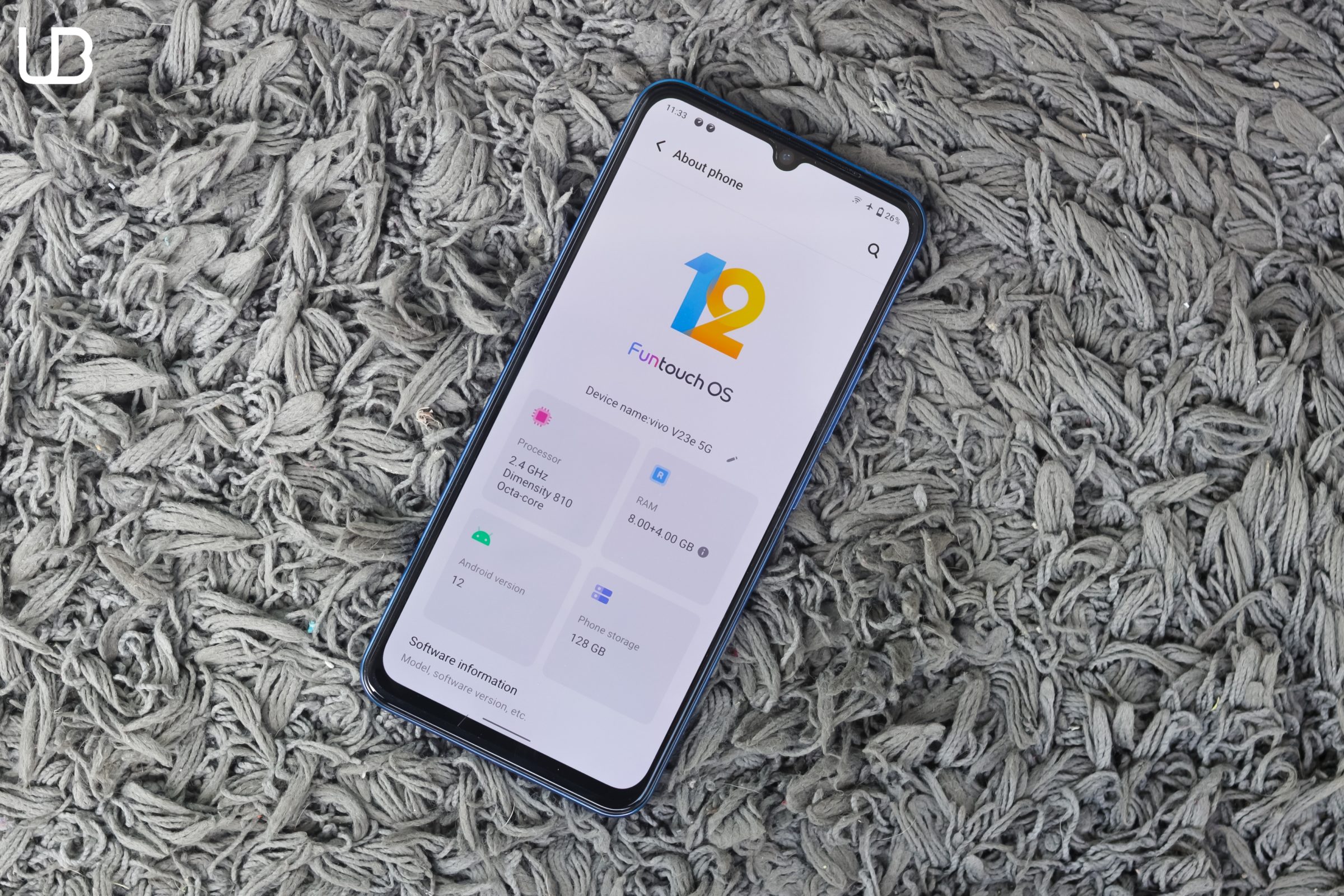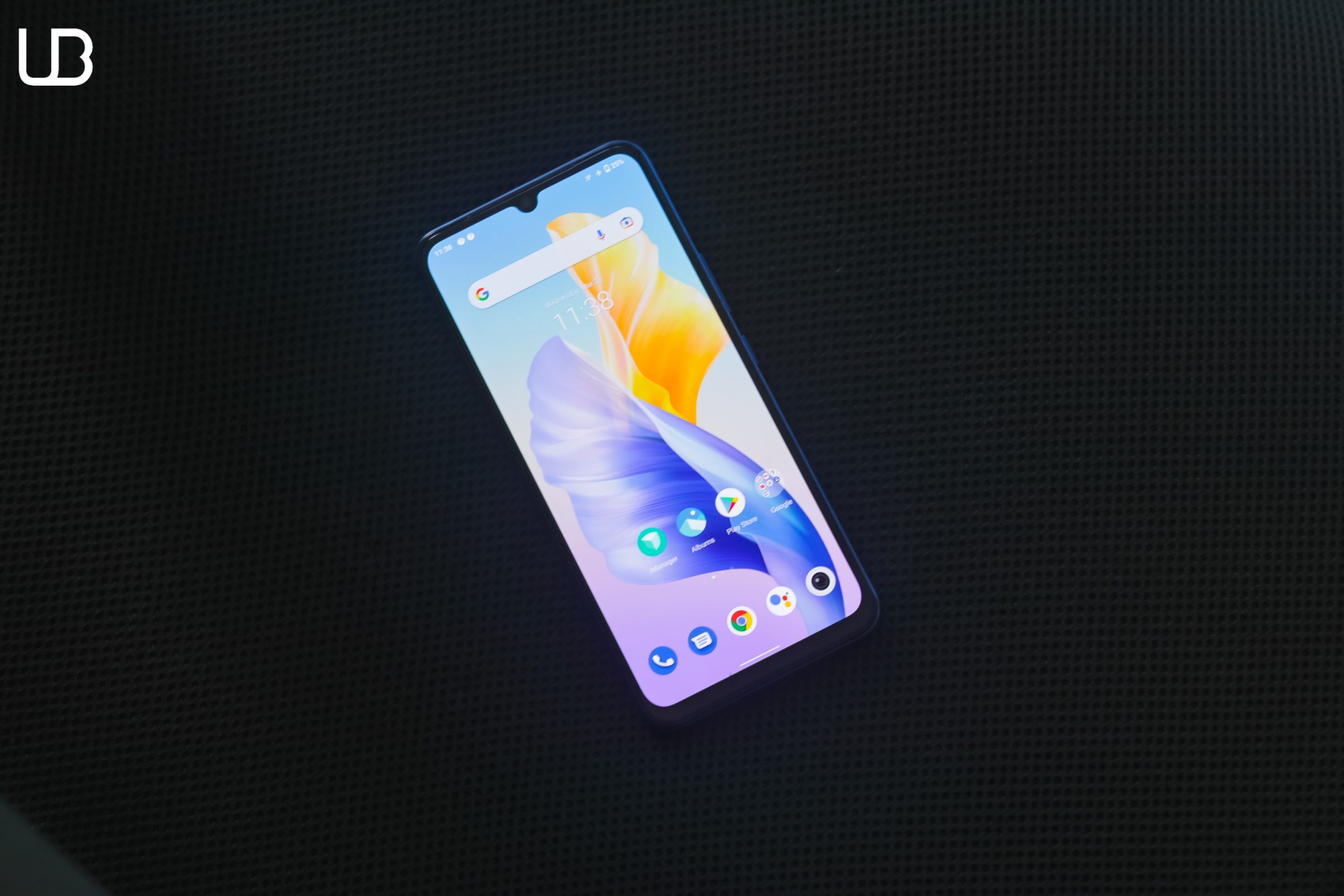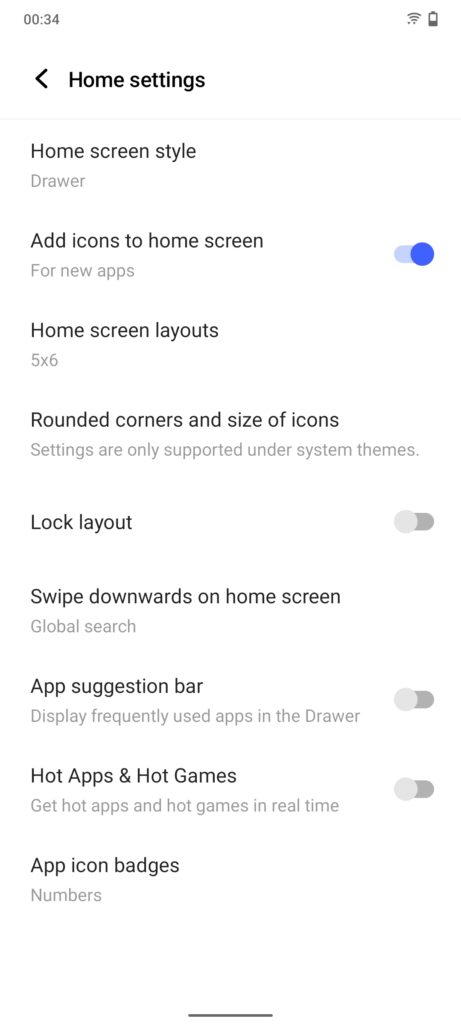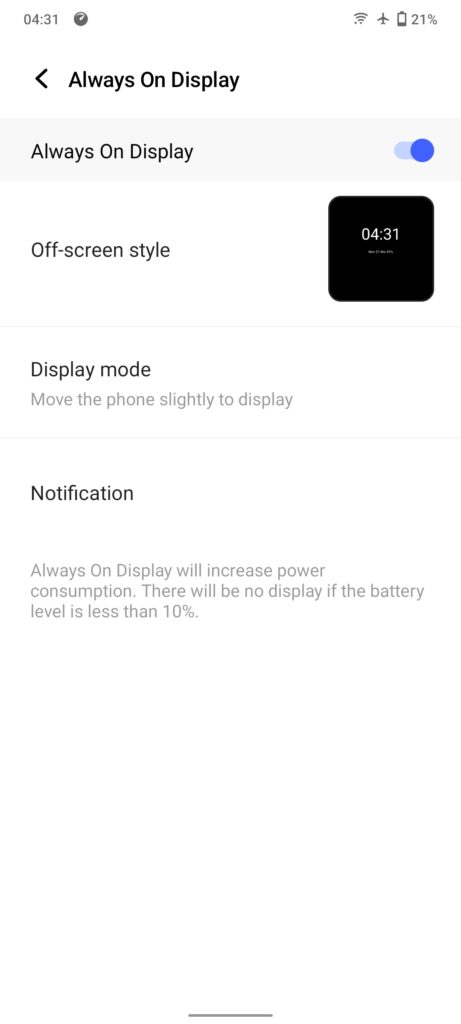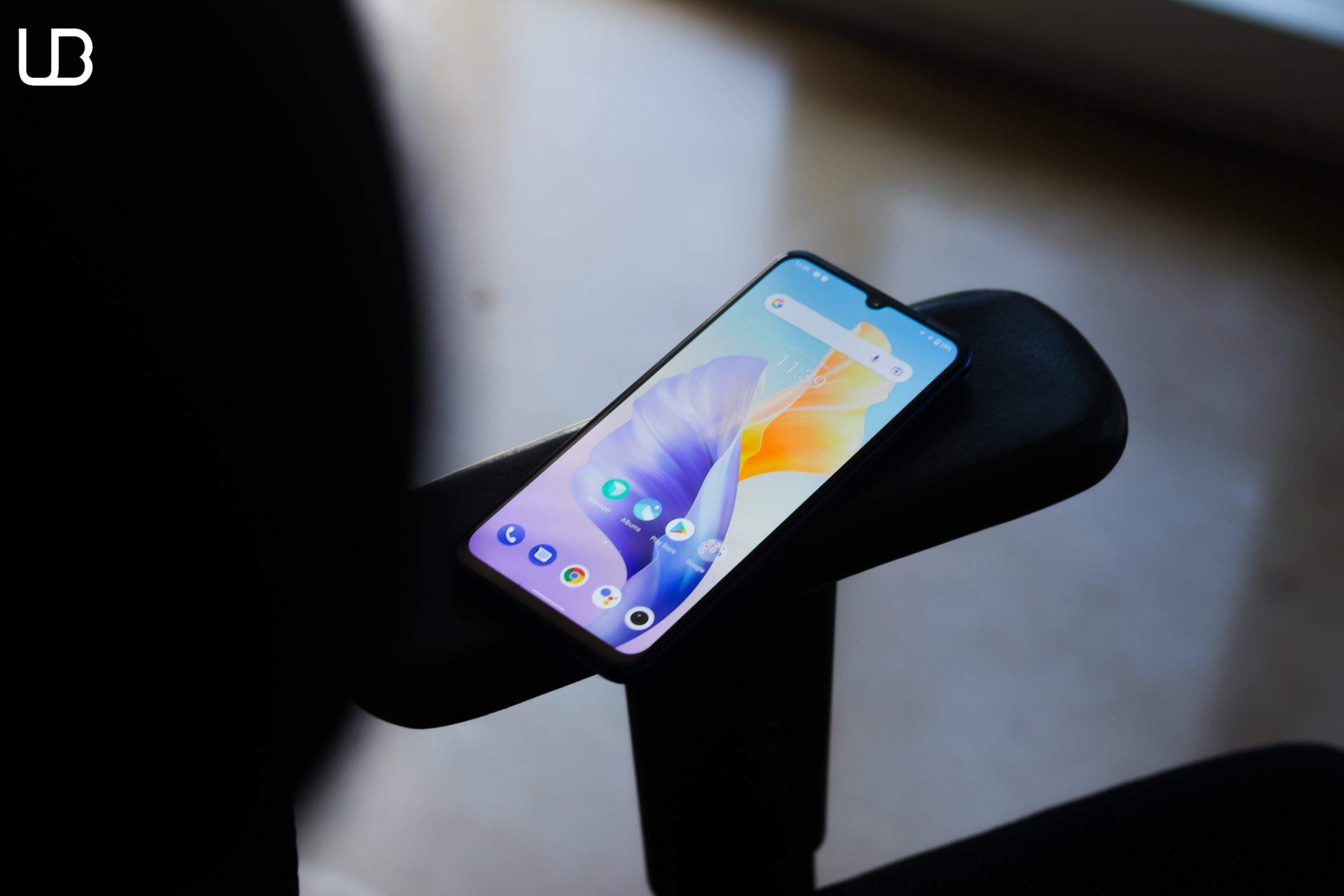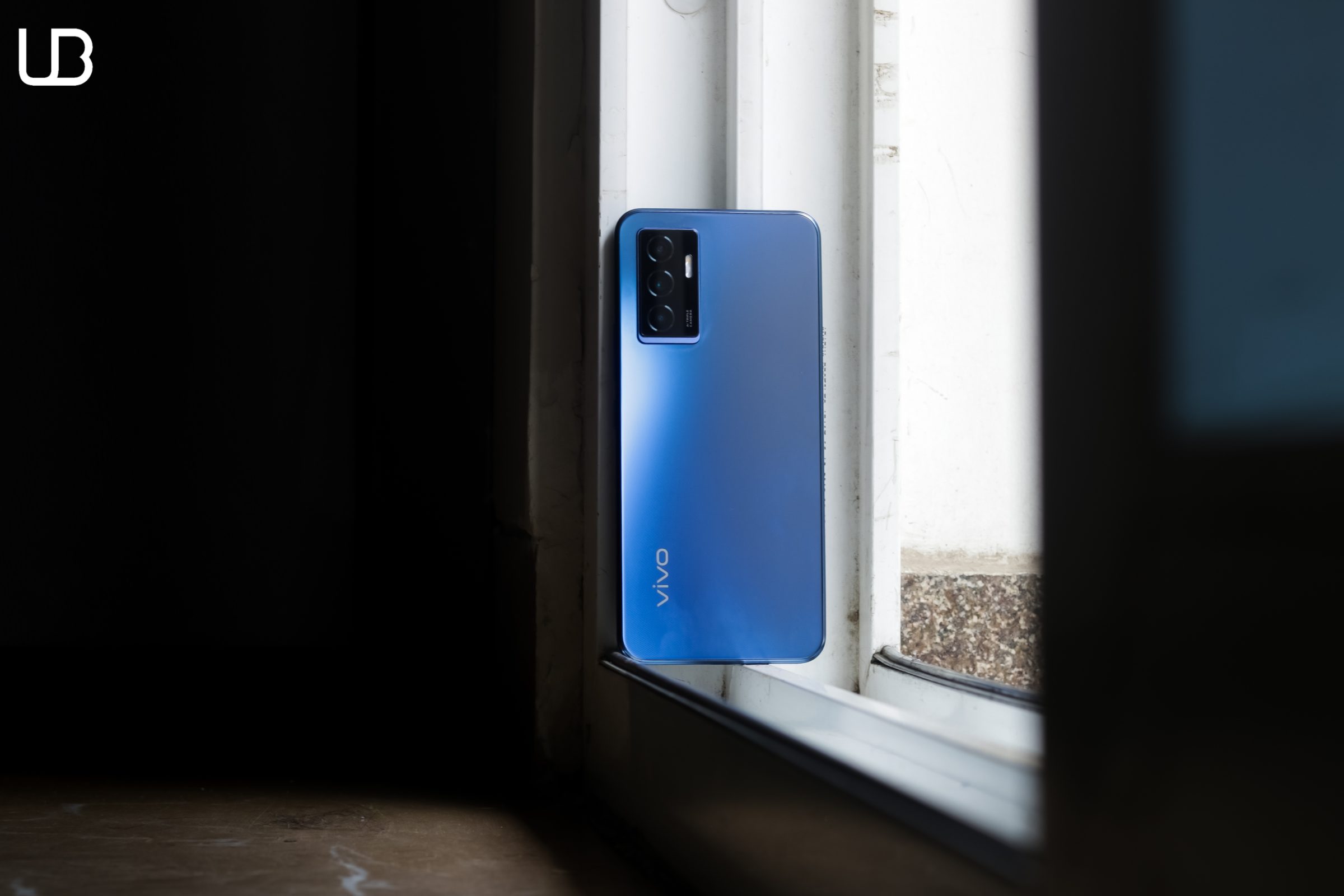If taking selfies is a routine for you then Vivo smartphones are really the first choice. And with each passing month, Vivo adds a new smartphone to its portfolio for all selfie lovers. The newest entrant, Vivo V23e is no exception, it joins the hugely popular V series from Vivo.
On 5th January, Vivo announced two new devices to join its Vivo V series i.e, Vivo V23 and Vivo V23 Pro. This Vivo V23e is a successor to Vivo V21e which was announced in June 2021 and a trimmed down version of Vivo V23. This device brings few upgrades from its previous iterations and the 44 MP front-facing camera is primarily focused. Will it amuse today’s youth in terms of delivering a better value for money smartphone or the ‘selfie prowess’ is enough? After using this device as our primary smartphone for two weeks, here’s our review of the Vivo V23e. But first, let’s look at the specifications:
Vivo V23e 5G Full Specifications
| Brand | Vivo |
| Model | V23e 5G |
| Price in India | ₹25,390 |
| Release date | 23rd November 2021 |
| Launched in India | Yes |
| Form factor | Touchscreen |
| Body type | Plastic |
| Dimensions (mm) | 160.87 x 74.28 x 7.36 |
| Weight (g) | 172.00 |
| Battery capacity (mAh) | 4050 |
| Fast charging | Proprietary |
| Colours | Midnight Blue, Sunshine Gold |
| Refresh Rate | 60 Hz |
| Screen size (inches) | 6.44 |
| Touchscreen | Yes |
| Resolution | 1080×2400 pixels |
| Aspect ratio | 20:9 |
| Processor | octa-core |
| Processor make | MediaTek Dimensity 810 |
| RAM | 8GB |
| Internal storage | 128GB |
| Expandable storage | Yes |
| Expandable storage type | microSD |
| Expandable storage up to (GB) | 1000 |
| Dedicated microSD slot | Yes |
| Rear camera | 50-megapixel (f/1.8) + 8-megapixel (f/2.2) + 2-megapixel (f/2.4) |
| No. of Rear Cameras | 3 |
| Rear autofocus | Yes |
| Rear flash | Yes |
| Front camera | 44-megapixel (f/2.0) |
| No. of Front Cameras | 1 |
| Front autofocus | Yes |
| Operating system | Android 12 |
| Skin | Funtouch OS 12 |
| Wi-Fi | Yes |
| GPS | Yes |
| Bluetooth | Yes, v 5.10 |
| USB Type-C | Yes |
| Number of SIMs | 2 |
| SIM 1 | |
| SIM Type | Nano-SIM |
| GSM/CDMA | GSM |
| 3G | Yes |
| 4G/ LTE | Yes |
| 5G | Yes |
| Supports 4G in India (Band 40) | Yes |
| SIM 2 | |
| SIM Type | Nano-SIM |
| GSM/CDMA | GSM |
| 3G | Yes |
| 4G/ LTE | Yes |
| 5G | Yes |
| Supports 4G in India (Band 40) | Yes |
| In-Display Fingerprint Sensor | Yes |
| Compass/ Magnetometer | Yes |
| Proximity sensor | Yes |
| Accelerometer | Yes |
| Ambient light sensor | Yes |
| Gyroscope | Yes |
BOX CONTENTS
- Vivo V23e
- 44W Vivo Flashcharge Charging Brick
- Type-C Data Cable
- Protective Case
- Sim Ejector Pin
- Quick-Start and Safety Guide
DESIGN AND DISPLAY
The design is standard and complicated at the same time with the Vivo V23e 5G. It is available in two colours: Sunshine Coast and Moonlight Shadow. The choice of build quality for both the colourway is like chalk and cheese; the Sunshine Coast uses a glass back and Moonlight Shadow uses a compromised plastic back. Surprisingly, there’s no price difference between both of them. For our review, we used the Moonlight Shadow colour.
This matte finished flat plastic back carries its resemblance from a mirror which shimmers when light strikes it and keeps the fingerprints and smudges at bay. Since it holds off a very reflective surface, the fingerprint traces are visible but wiped off with ease. This matte finish aids in gripping the device easier and it doesn’t feel slippery. Vivo also bundles up a Transparent Polycarbonate Case (TPU) in the box to keep its beauty intact.
With a weight of 172 grams and an overall thickness of 7.36mm, it’s lighter and more ergonomic than the Vivo T1 5G. Delivering the physical overview; on the right, it flanks a power button and volume rockers which deliver tactile feedback whereas the left side is barebone. Over the bottom, it has a Type-C Charging Port with a mono speaker, to its right is the SIM Tray Slot and secondary microphone to its left. Over the top, it holds a primary microphone. It uses a shared SIM slot that can accommodate either two SIM cards or one SIM card and a memory card at once.
The speaker’s output is very average if you’re an avid media consumer, they are pretty loud for sure but cranks up at higher volumes but misses richness in the sound. There are smartphones with stereo speakers available at this price tier that sound way better. The triple camera setup lies on a rectangular camera bump that bulges out a tad bit which makes it wobble on flat surfaces.
With a 6.44 inch AMOLED Display, the Vivo V23e’s display still sounds average on paper because other smartphones like Realme 9 Pro+ and Xiaomi Mi11i HyperCharge have spoiled the consumers with higher refresh rates whereas this one only supports up to 60Hz. If you’re someone like me who’s switching from a 90hz or 120hz panel, you’ll notice the stuttering while scrolling or navigating into the UI. Furthermore, it still continues its place with the dewdrop notch which makes the device look a bit outdated.
Apart from these drawbacks, this AMOLED panel reproduces punchy and vibrant colours which look pleasant to the eyes. During indoor and outdoor scenarios, we didn’t witness any visibility issues under harsh sunlight. The other perks that this display panel offers is the AOD display, In-screen fingerprint sensor (which still looks cool) and deeper blacks and brighter whites with the regular LCD panel. It comes with three colour profiles: Standard, Professional and Bright. However, we noticed that switching between ‘Standard’ and ‘Bright’ profiles doesn’t make any difference and the ‘Professional’ profile shifts the colour to the warm hues. Hence, we’ll recommend sticking with the ‘Standard’ profile only. It comes with the support for Widevine L1 certification which enables HDR playback while watching Netflix or Amazon Prime.
PERFORMANCE
Vivo V23e is powered by the Mediatek Helio G96 based on a 12 nm technology is a 5G-ready chipset. These are arranged in a dual cluster of two Cortex-A76 which delivers a clock speed of up to 2.05 GHz and six cores Cortex-A55 which is clocked at 2 GHz. This processor is not an upgrade over the Qualcomm Snapdragon 720G which was based on 8nm technology on the Vivo V21e but is slightly better than the Mediatek Helio G95. However, the choice of replacing Mediatek Dimensity 810 with the Mediatek Helio G96 for Indian consumers is a bad choice indeed which creates an impact on the performance. Meanwhile, the graphical duties are handled by the Mali-G57 MC2 GPU.
In real-life scenarios, we encountered a lot of lag and slow down while navigating into its UI even with less than 6 applications. It was quite shocking as we’d already enabled the extended RAM feature and had 12GB RAM at our disposal. While running benchmark apps; it scored 396409 in the Antutu benchmark, 579 on the single-core score and 1725 on the multi-core score in Geekbench 5. In the CPU Throttling test, the device throttled to 79% of its max performance. After multiple rounds of game titles like BGMI, it maxed out at HD graphics with high frame rates with an average of 24-30 FPS with some pinch of intermittent drops. Toning down to Smooth graphics and Ultra frame rates, we managed to churn out 40-51 FPS with zero lags at all. Day-to-day multitasking poses zero issues. To sum up, it’s like bringing a knife into a gunfight, the competition is way too ahead with much much better processors to flush it out of the scene.
CAMERA
A smartphone camera’s capabilities are not just limited to the hardware functionality, algorithms play a key role in shaping your images to stand out on your expectations. The Vivo V23e bundles up to three camera sensors: 64MP Primary Camera Sensor, 8MP Ultra-wide Angle Lens and 2MP Macro Camera.
Photos that are captured with this primary camera sensor maintains a good exposure with the details in the scene along with slightly saturated colours to pop the image out. The highlights and shadows are exposed pretty well. The close-up images come out pretty well with well-pronounced sharpness and on-point background separation. As soon as you zoom into the landscape pictures, the compromised details will be quite evident in the pictures. In low light scenarios, it captures brighter images according to the circumstances which lead to excessive grains when there is no light source in the scene. Otherwise, it performs pretty well in indoor as well as low-light scenarios.
The 8MP Ultrawide angle lens captures a slightly muted colour scheme than the primary camera sensor and details look slightly washed out but the results are usable when you need to capture an extra field of view with this. There are some focusing issues as well with this lens which might end up in blurry photos if not properly fixed focus point in it. The 2MP Macro Camera is par and we recommend switching to the primary camera and later cropping it in post-processing to get your desired look.
The 44MP Selfie-shooter on the front captures bright images with an ample amount of facial details present in the scene. Turning on the portrait mode smoothens the skin pores without blurring the background but produces better output than ordinary selfies. Moving towards video capabilities, Vivo V23e can shoot only up to 1080p resolution at 60 FPS with both front and rear camera, at least 4K resolution would be appreciated. However, it comes with EIS for both rear and front cameras. Slow-motion is also available for the front camera which is restricted at 720p resolution and works decently good.
SOFTWARE AND BATTERY
Like any other Vivo device, Vivo V23e runs on FunTouch OS 12 which is running on the latest Android 12 out of the box, whereas the experience is far from ideal. After setting the device up, it presented over dozen of preloaded apps and abundant notification spam from the browser and Moj app. The quality of these apps starts from Facebook, CRED and lands on apps like Josh, Moj and Moj lite. Some of these apps can be uninstalled easily which is a sign of relief. ‘Hot Apps’ & ‘Hot Games’ can be disabled by navigating into the launcher settings.
It holds various choices of customization features as per your taste but if you’re a fan of AOD in Vivo devices, then there’s bad news for you. Vivo V23e offers only six AOD styles whereas the other Vivo device offers plenty of AOD styles with the ability to tweak them. The 4,050mAh battery is slightly bigger than the 4,000mAh cell in the Vivo V21e and I found that it can easily last for seven to eight hours with a couple of BGMI sessions, binge-watching, surfing on the internet and browsing social media content. For someone with moderate usage, this can last for one and a half days with ease. When it is time to top off the battery, the included 44W fast charger is a welcome change, which is way faster than the 33W available in its previous iteration. Vivo claims that it can reach from 0% to 69% in 30 minutes and we didn’t feel that these claims are false. We’re able to juice up the device from 0% to 100% in less than an hour which is pretty impressive.
THE UNBIASED VERDICT
Vivo V23e is available in two colours but with only one storage configuration (8GB/128GB) priced at Rs 25,990. The device is available on Flipkart and Vivo’s Official Website.
Vivo V23e 5G is just like an average student who scores borderline just to pass in exams, it’s strictly an average device without any standout calibre that puts it below its competitors. These slight compromises affect the overall experience; be it the lack of a higher refresh rate, a questionable SOC and sluggish day-to-day performance. It fits pretty well for those who are looking for a decent 5G device with an amusing camera setup, a lightweight form-factor, socially appealing design and fast charging and has a soft corner for Vivo devices, so considering this device is not a bad option. It can handle moderate gaming sessions but not exceptionally well as competitors. However, if you are someone whose usage relies on moderate calls, social media usage, clicking pictures; This will fulfil those needs for you.
If you’re looking for other alternatives, Realme 9 Pro+ delivers a fluid and snappy experience with a 90Hz AMOLED display, Mediatek Dimensity 920 which outperforms pretty well with an overall good camera experience. The Xiaomi 11i Hypercharge has a blazing fast 120W Fast Charging which looks and delivers more tempting results onboard. Some other alternatives include Realme 9 SE, OnePlus Nord CE 2, Realme GT Master Edition and iQoo Z5.
Disclaimer: We tested the Vivo T1 5G (8GB+128GB) for two weeks before writing this review. All our reviews are unbiased and are published without the brand getting to read it before you guys. We don’t change our reviews on pressure from brands and that’s the reason we are not sent review units from companies like Samsung, OnePlus, Xiaomi, and a few more.
